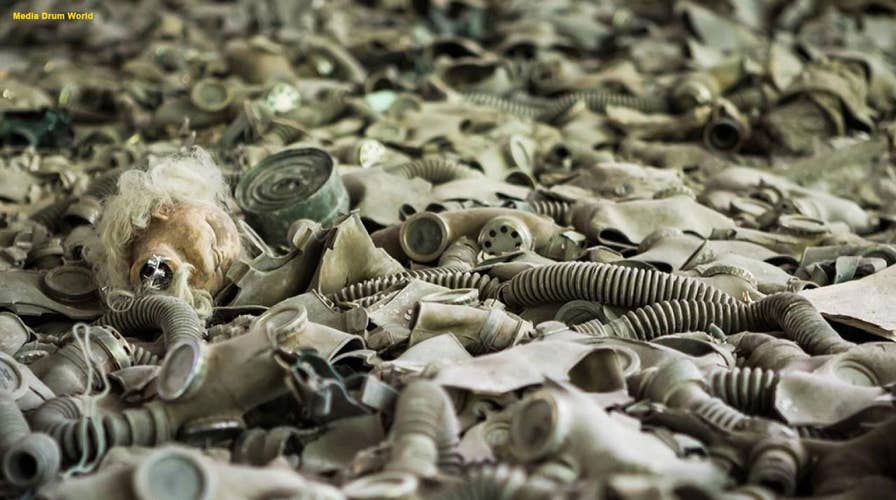New photos show what is left of the towns of Chernobyl and Pripyat after the worlds’ worst nuclear disaster
New photographs show how nature is reclaiming a town abandoned after a nuclear disaster 33 years ago. A two-year project examining the eerie remains of Chernobyl and Pripyat in Ukraine show gas masks scattered about and dolls left abandoned in a daycare center.
A new structure built to confine the Chernobyl reactor at the center of the world's worst nuclear disaster was previewed for the media Tuesday.
Reactor No. 4 at the Chernobyl nuclear power plant in Ukraine exploded and burned April 26, 1986.
The complex construction effort to secure the molten reactor's core and 200 tons of highly radioactive material has taken 9 years to complete under the auspices of the European Bank for Reconstruction and Development. It was built to cover the temporary concrete and steel Shelter Structure, which was built immediately after the disaster, but which had begun to deteriorate in the 1990s.
CHERNOBYL TOUR OPERATORS SAY BUSINESS IS BOOMING THANKS TO HBO MINISERIES
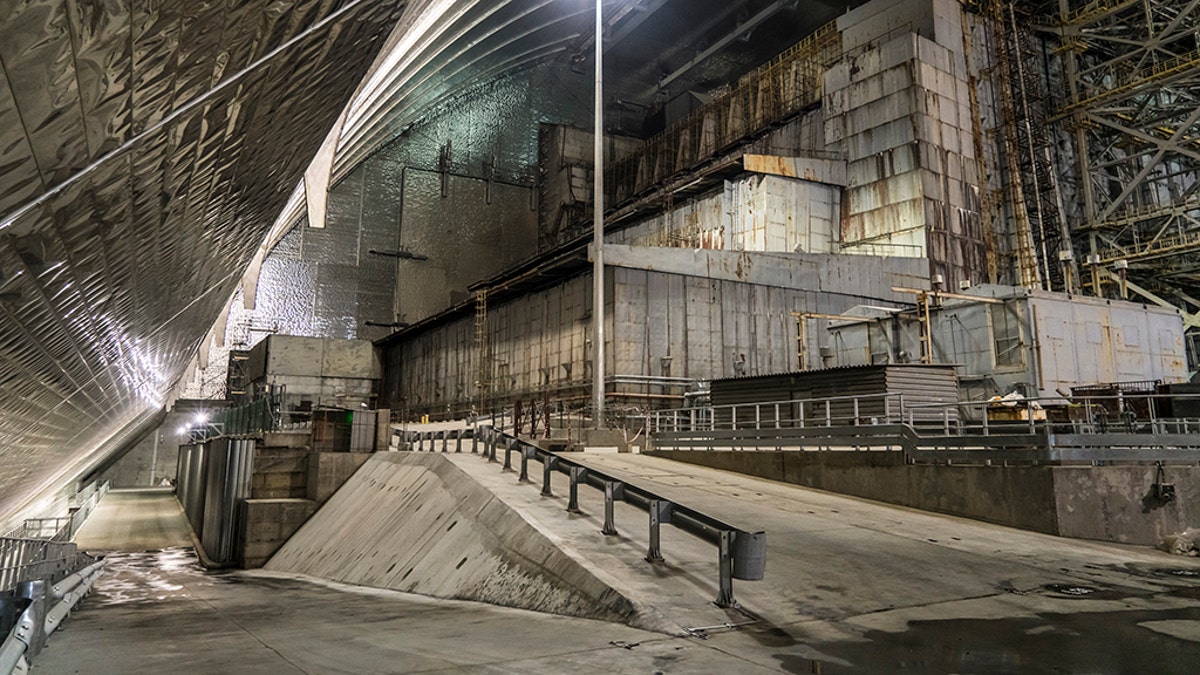
A view inside the 'New Safe Confinement' of the old sarcophagus entombing the destroyed reactor number four at the Chernobyl Nuclear Power Plant on July 2, 2019 in Pripyat, Ukraine. (Brendan Hoffman/Getty Images)
The structure itself cost 1.5 billion euros (almost $1.7 billion) and the entire shelter project cost 2.2 billion euros. The European Bank for Reconstruction and Development managed a fund with contributions from 45 countries, the European Union and 715 million euros in the bank's own resources.
'CHERNOBYL' STAR ALEX FERNS SAYS HIS UNCLE DIED FROM CANCER CAUSED BY NUCLEAR DISASTER
The shelter is the largest moveable land-based structure ever built, with a span of 843 feet and a total weight of over 36,000 tonnes.
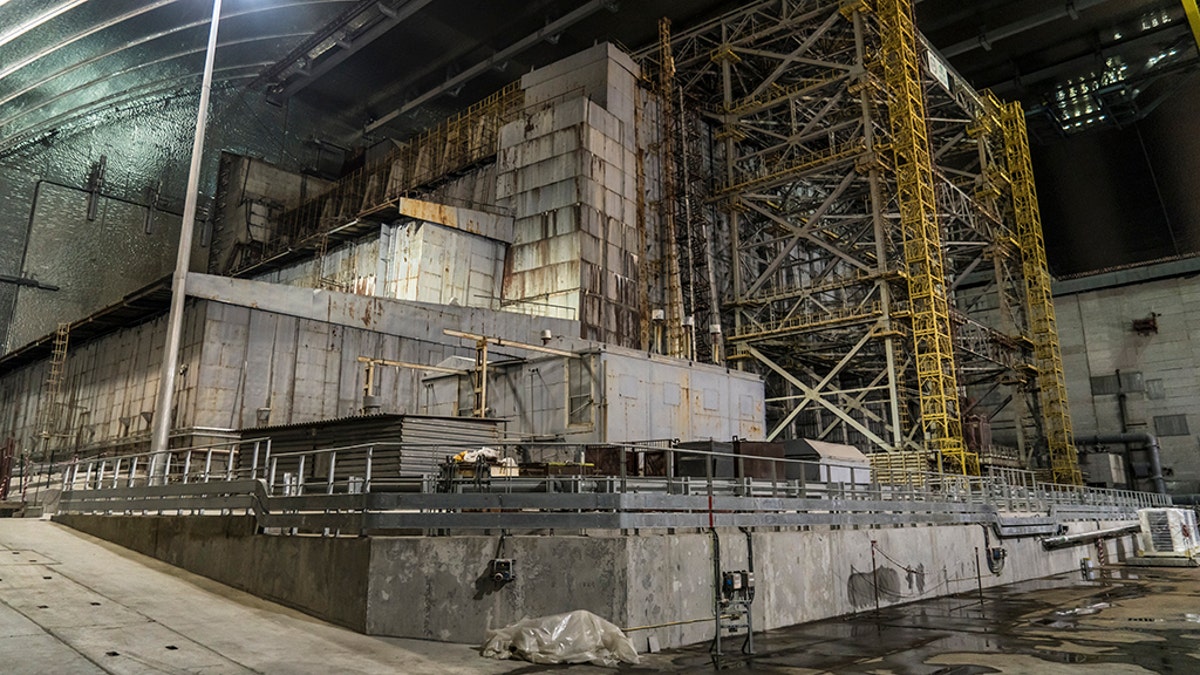
The power station's reactor number four exploded in April 1986, showering radiation over the local area, nearby regions of Belarus, and other portions of Europe. (Brendan Hoffman/Getty Images))
"This was a very long project," said Balthasar Lindauer, director of the bank's Nuclear Safety Department. He noted that preliminary studies began in 1998 and the contract for the structure was placed in 2007.
He said Ukraine was a big contributor, contributing 100 million euros in cash along with expertise and personnel.
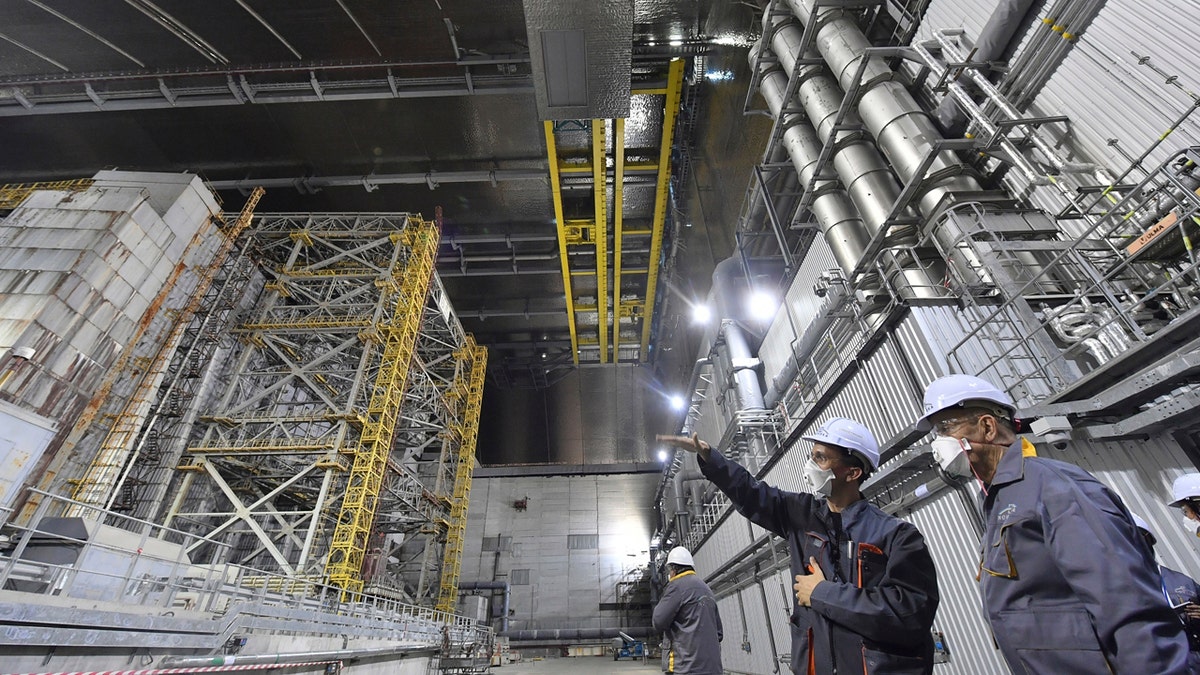
In this June 1, 2019, file photo, French Foreign Minister Jean-Yves Le Drian, right, listens to an employee inside the New Safe Confinement (NSC) movable enclosure at the nuclear power plant in Chernobyl, Ukraine. A new structure built to confine the Chernobyl reactor at the center of the world's worst nuclear disaster was previewed for the media Tuesday, July 2. (Sergei Supinsky/Pool Photo via AP, File)
The 1986 explosion at the Chernobyl nuclear plant in Ukraine sparked a widespread environmental disaster. Thirty workers died either from the explosion at the number four reactor or from acute radiation sickness within several months. The accident exposed millions in the region to dangerous levels of radiation and forced a wide-scale, permanent evacuation of hundreds of towns and villages in Ukraine and Belarus.
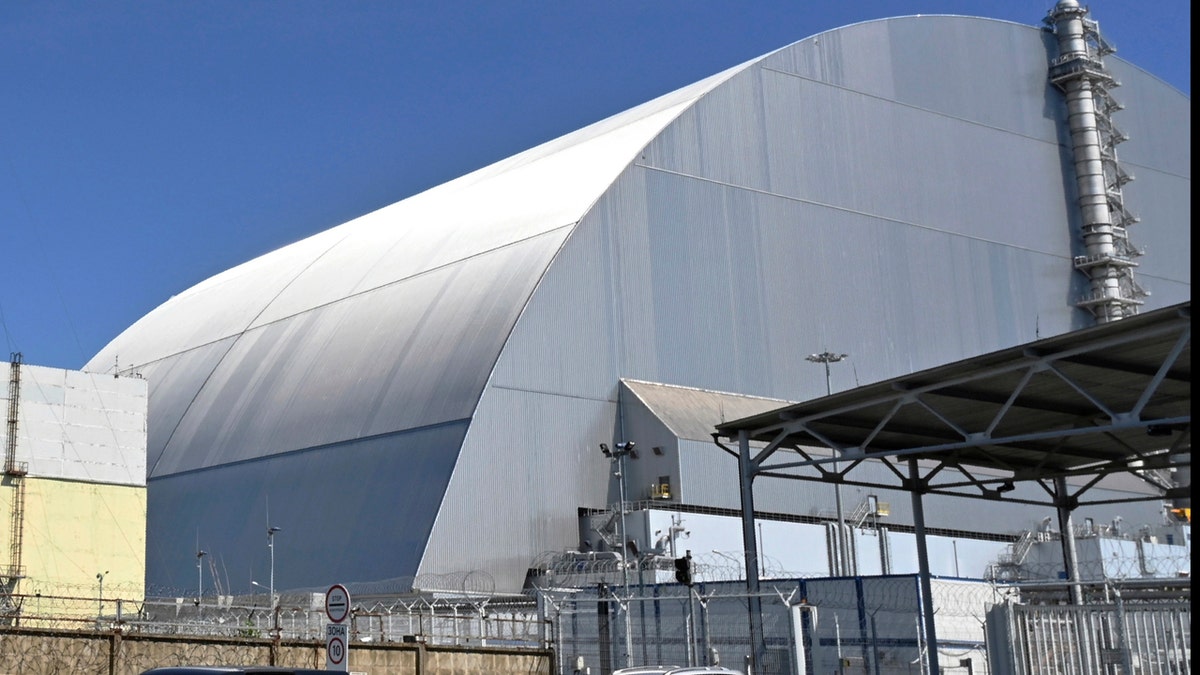
This June 1, 2019, file photo shows a view of the New Safe Confinement (NSC) movable enclosure at the nuclear power plant in Chernobyl, Ukraine. A new structure built to confine the Chernobyl nuclear reactor at the center of the world's worst nuclear disaster has been previewed for the media. (Sergei Supinsky/Pool Photo via AP, File)
There are varying estimates for the final death toll from Chernobyl, due to the long-term effects of radiation. In 2005, the International Atomic Energy Agency estimated the total death count from the disaster at around 4,000, whereas the World Health Organization has estimated 9,000 deaths. A recent study out of Belarus, meanwhile, estimated that number at 115,000.
Despite the disaster, tourism is now reportedly thriving thanks to the popularity of the new "Chernobyl" miniseries on HBO.
CLICK HERE TO GET THE FOX NEWS APP
Tour operators near the plant said last month they had seen an increased demand of up to 40 percent over last year's numbers.
Fox News' Michael Bartiromo contributed to this report.
